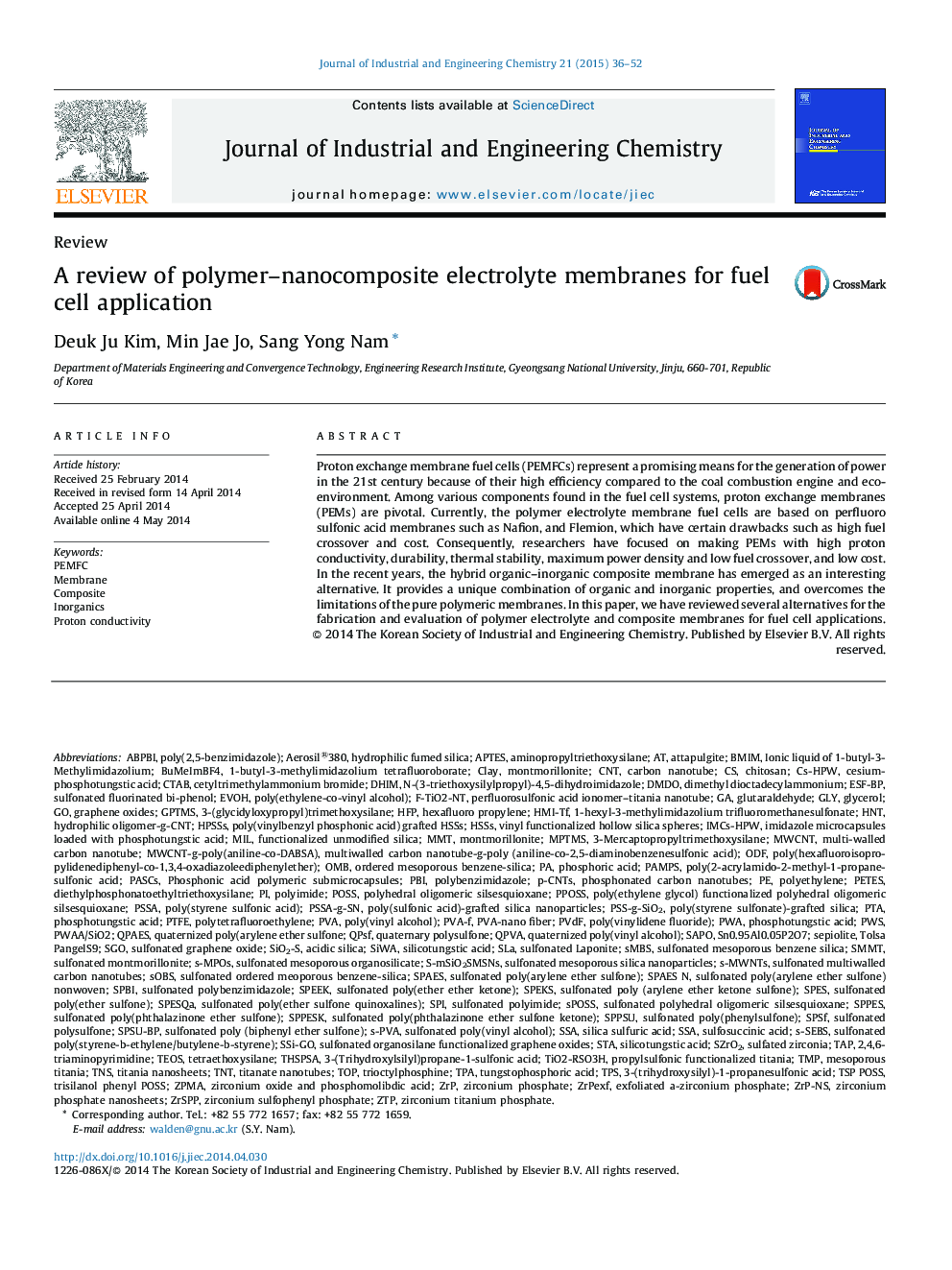| Article ID | Journal | Published Year | Pages | File Type |
|---|---|---|---|---|
| 226881 | Journal of Industrial and Engineering Chemistry | 2015 | 17 Pages |
Proton exchange membrane fuel cells (PEMFCs) represent a promising means for the generation of power in the 21st century because of their high efficiency compared to the coal combustion engine and eco-environment. Among various components found in the fuel cell systems, proton exchange membranes (PEMs) are pivotal. Currently, the polymer electrolyte membrane fuel cells are based on perfluoro sulfonic acid membranes such as Nafion, and Flemion, which have certain drawbacks such as high fuel crossover and cost. Consequently, researchers have focused on making PEMs with high proton conductivity, durability, thermal stability, maximum power density and low fuel crossover, and low cost. In the recent years, the hybrid organic–inorganic composite membrane has emerged as an interesting alternative. It provides a unique combination of organic and inorganic properties, and overcomes the limitations of the pure polymeric membranes. In this paper, we have reviewed several alternatives for the fabrication and evaluation of polymer electrolyte and composite membranes for fuel cell applications.
Graphical abstractFigure optionsDownload full-size imageDownload as PowerPoint slide
